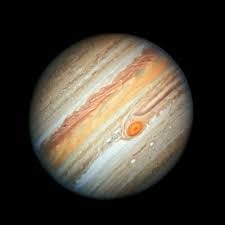Weekly - Scientists find new dwarf planet in our solar system
🟢 Weekly Space News - Quick and Easy.
Our Engagement Palette!
Check out our colour-coded system for our weekly space news:
🟤 Brown: For weeks that are mundane and bland.
🟡 Yellow: For fairly interesting weeks.
🟢 Green: For the most exciting weeks.
This Palette will help you decide if this week’s news is worth your time!
This week ranks green 🟢 on the Engagement Palette.
Jupiter used to be twice as large in the past
Last week, researchers analysing the inner moons of Jupiter, Amalthea and Thebe, made a groundbreaking discovery. Analysing the moon’s orbits, which were mysteriously slightly tilted, they managed to reconstruct their old paths, and also discovered that Jupiter used to be twice as large in size as it is today, with a magnetic field 50 times stronger. Over the years, Jupiter radiated much of the heat inside it away, shrinking in size and weakening its magnetic field.
Scientists find new dwarf planet in our solar system
Last week, scientists announced the discovery of a new dwarf planet in our solar system. The new planet named ‘2017 OF201’ is 700km in diameter (not big enough to officially be a planet), hence it is a dwarf planet, like Pluto. This discovery adds to the rare list of large trans-Neptunian objects (TNOs) like Pluto, Ceres and Makemake that orbit the sun. The new planet’s orbit is so large that at its closest point, it is at about Pluto’s distance, but at its farthest, it is more than 50 times farther away from the sun than Neptune. Solar wind cannot reach it, but since it is still under the Sun’s gravity, it is considered to be in the solar system.



